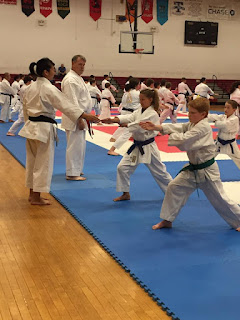By Phillip Starr
I was recently reading about a young man’s first visit to Japan. He had trained in iaijutsu and kenjutsu for several years with a Japanese instructor who had come to the U.S. as a college professor. The young American had traveled to Japan to spend time with his sensei and to immerse himself in the country from which his chosen martial disciplines had originated.
When he arrived in Japan, the young American took some time to take in the sights and he was given the opportunity to visit an iaido dojo in a rather small Japanese town. The dojo was run by a hachidan (8th dan, of which there are only a few) who asked him to perform the first basic kata known as “mae.”
The American felt that he had done an adequate job but the headmaster thought differently. He told his guest to work on one particular movement of the kata – it was a bit rough and needed polish. They exchanged bows and the American prepared to repeat the kata.
He gave it his very best but when he finished it he noticed that the headmaster was on the other side of the dojo, giving instruction to another student. What happened next actually showed what this American was made of; it showed his heart.
He continued to practice the kata (which he had practiced for many years as it’s the very first kata taught to beginning iaido students) until he was soaked with sweat. After more than an hour’s worth of repeating the same fundamental kata, one of the senior students walked up and told him to perform the second kata! The American noticed that the headmaster was standing with his arms folded on the other end of the dojo, watching him.
And so it went for the ten “seitei” katas. The American could barely get undressed and walk back to the house where he was staying. His legs were exhausted and he could barely lift his shoulders. But he was back in training the next day.
Now, I often walk away from my students while they are working on a particular form or technique – just to see what they’ll do. Most of them will continue to practice what they were told. A few will walk over to me to ask what they should do and some (yes, it happens with black belts, too) discontinue practicing as they begin to talk and socialize with their classmates.
Confucius said that if a teacher shows the student one corner, the student should be able to find the other three. If he cannot (or will not), then the teacher should leave him alone because he’s simply a waste of time.
My teacher would sometimes show us a particular technique or an aspect of a technique or form and then see what we did with it. Most of my classmates promptly forgot whatever it was that he’d shown them. They didn’t practice it on their own time and their performance didn’t improve. They were not shown any of the deeper aspects of the art because such things require a great deal of practice at home and he knew they’d never meet that requirement.
A few of the others would “fool around” with what they had been shown; they didn’t put in much time on their own and they’d often ask Sifu Chen if they were doing it right, and so on. Again, they received none of the deeper instruction because there was simply no point in it.
Very, very few actually trained regularly (and vigorously) at home with the material they had been shown. But our teacher was watching…always watching. He’d smile and laugh with us but he was always watching and evaluating. And in the end, very few students qualified (in his mind) to learn the real kung-fu.
Which group do you fall into?



























No comments:
Post a Comment